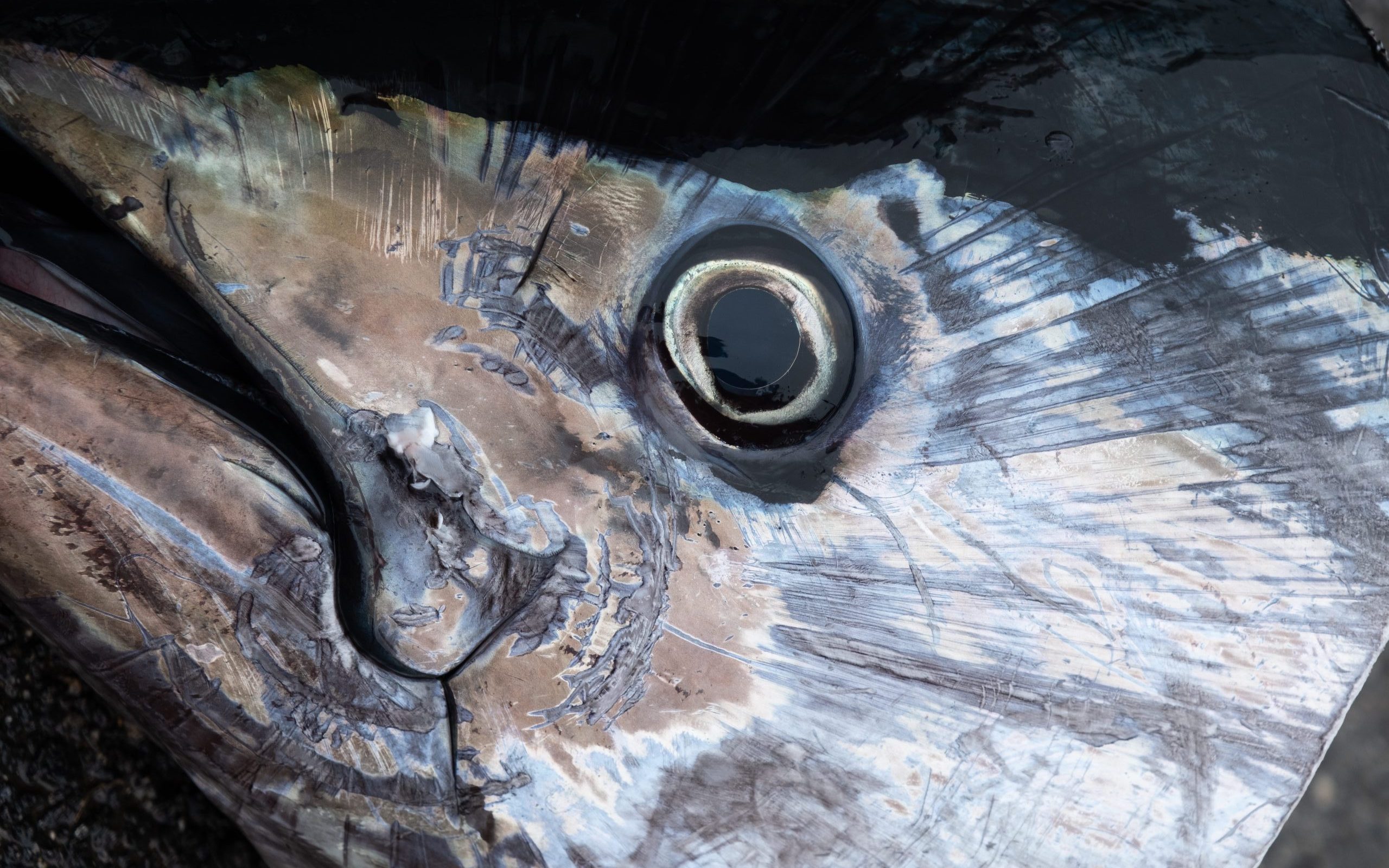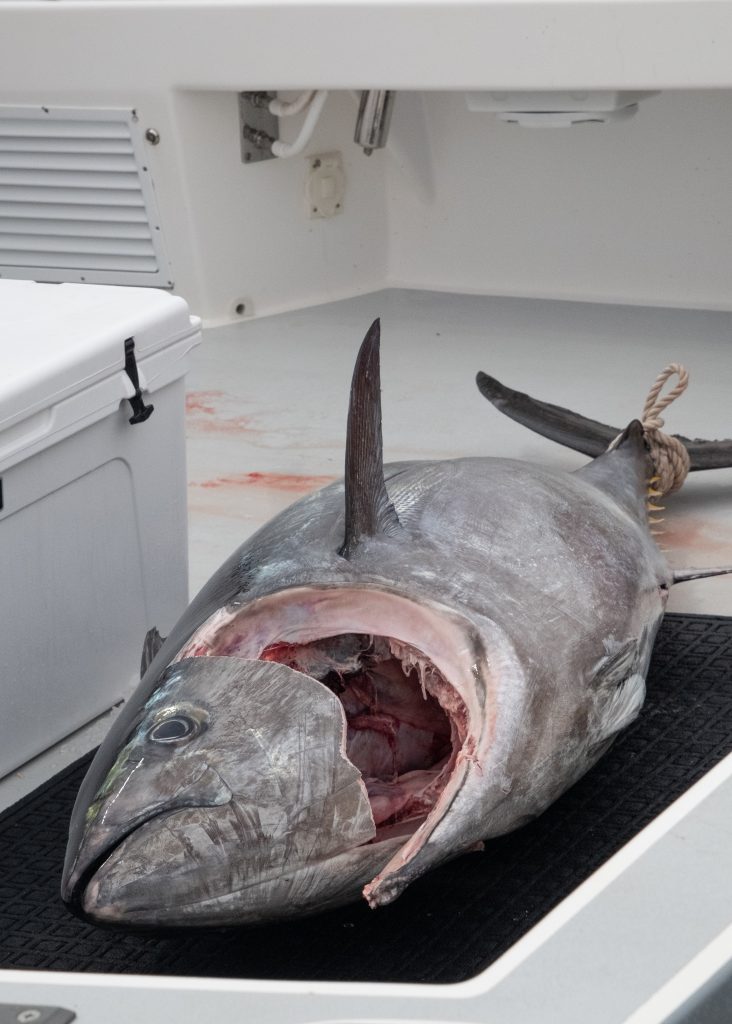
Sammi Nadeau: UMaine research contributes to global collaborative of Atlantic bluefin tuna foraging ecology
Each summer, Portland, ME fills with cruise ships and foot-traffic; tourists looking for scenic coastal views, local shops, and some of the best regional cuisine in New England. However, these aren’t the only tourists looking for a great meal. Atlantic bluefin tuna (ABFT), Thunnus thynnus, are a highly migratory species that exist throughout the Atlantic and make seasonal migrations to the New England coast to gorge themselves on a lipid-rich pelagic buffet. Local ABFT foraging ecology studies have been relatively sparse and sporadic over the past few decades, but global evaluations across all foraging grounds are nonexistent. Researchers from the University of Maine’s Pelagic Fisheries Lab (PFL) conducted a foraging ecology study from 2018-2019 to evaluate potential changes in ABFT diet throughout the Gulf of Maine (GOM) which was more recently incorporated into a global collaborative led by Dr. John Logan at the Massachusetts Division of Marine Fisheries. The University of Maine’s School of Marine Sciences’ Dr. Walt Golet, Dr. Michelle Staudinger, and Sammi Nadeau all contributed as co-authors in the first international evaluation of ABFT foraging ecology spanning 35 years (1985-2020).
ABFT are currently managed as two separate stocks denoted by their respective spawning grounds: the Mediterranean Sea (eastern stock) and Gulf of Mexico (western stock). ABFT reproduction is an energetically taxing process best replenished by feeding on lipid-rich, abundant prey. The GOM is an ideal foraging ground for ABFT with its abundant and diverse ecosystem of small pelagic fishes like Atlantic herring, Atlantic mackerel, sand lance, squids, and Atlantic menhaden, among others. While ABFT are considered to be generalist predators, previous studies suggest that Atlantic herring are a historic staple among ABFT diet.

One of the easiest ways to evaluate ABFT diet is through stomach content analysis (SCA). Yes, you read that right, researchers in the PFL sort through digested stomach contents and identify individual prey through unique identifiers (color, shape, size, organs/structures, etc.). This provides a great hands-on opportunity for students to identify local species, learn more about the resources that support their communities, and execute practical data collection and organization skills. As you can imagine, this is not a task for just anyone, but PFL interns and techs consistently rise to the challenge and help researchers decipher what was on the menu.
Results from a recent study stemming from Sammi Nadeau’s Master’s thesis suggest dietary shifts from Atlantic herring to Northern shortfin squid and Atlantic menhaden. This change is likely due to the population decline of Atlantic herring concurrent with a strong squid cohort and recent resurgence of Atlantic menhaden in the New England area. While Northern shortfin squid are considered energetically moderate, they are easier to digest than higher quality prey like Atlantic herring, mackerel, menhaden, and sand lance and could have led to their increased consumption. Additionally, this study identified river herring (alewives and blueback herring) in ABFT diet for the first time, highlighting the importance of the local GOM region as a foraging ground and the success of river herring conservation and restoration efforts.

The East Coast was identified as a crucial foraging habitat in the new global study. The international collaborative team assembled datasets from multiple regions across the North Atlantic Ocean to evaluate how factors such as time, region, body size and environmental conditions influenced bluefin tuna diet. Results suggest that herring were a key prey group in the Gulf of Maine and broader Northwest Atlantic region, but other densely aggregating prey such as sand lance, mackerels, and squids were also important. Overall, time, region, and body size were the most influential when explaining differences among global ABFT diet composition.
As far as essential dining goes, the Gulf of Maine plays a critical role in the life history of Atlantic bluefin tuna. Local prey is abundant, energetically rich, and perfect for fulfilling the dietary needs of a highly migratory predator. Each spring, ABFT embark on their migration to the East Coast, hungry for more.
